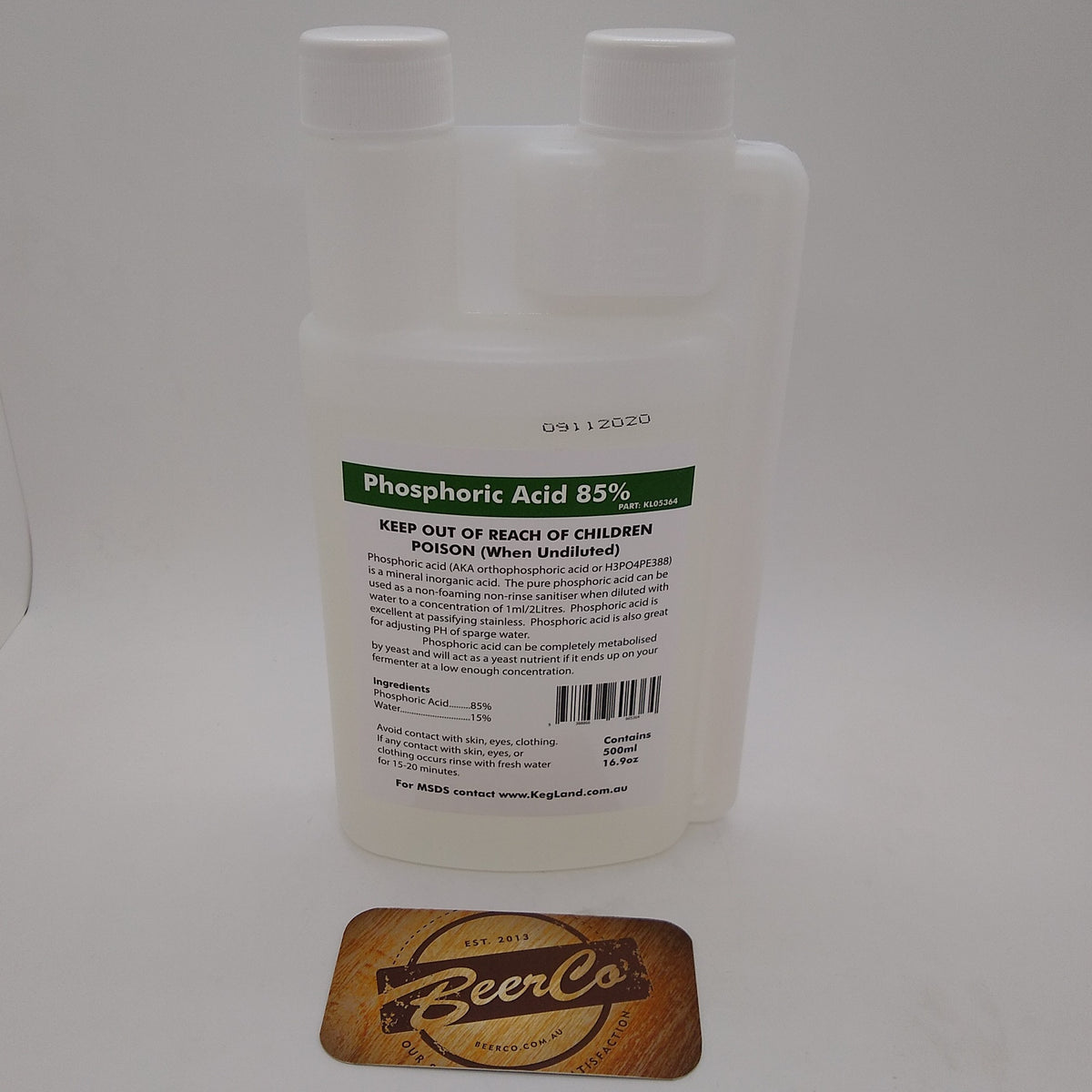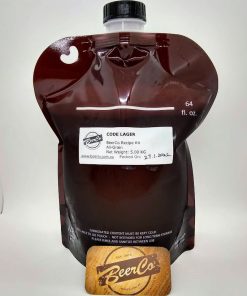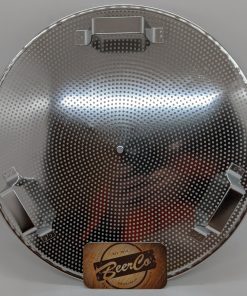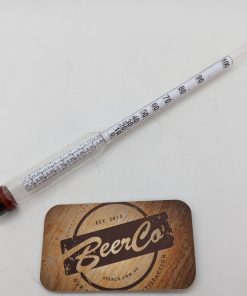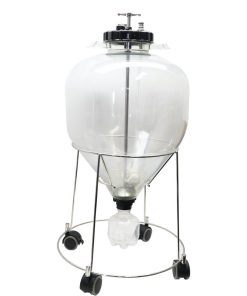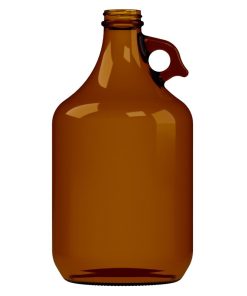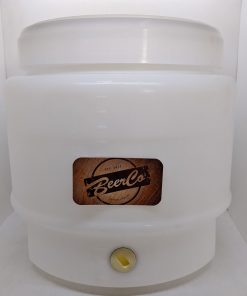Pure Phosphoric Acid (85% Pure) 500mL Kegland
$ 10,95 $ 6,57
Phosphoric acid (AKA orthophosphoric acid or H3PO4) is a mineral inorganic acid that can be used as a non-foaming/non-rinse sanitiser when diluted to water to a concentration of 1mL/2L.
Phosphoric acid is also an excellent chemical to use when passivating stainless steel.
This formula is also great at adjusting the pH of Sparge water and your Mash pH. If you prefer to use the traditional pH adjusting ingredients we would suggest Acidulated Malt.
Phosphoric acid can also be completely metabolized by yeast and will also act as a yeast nutrient if it ends up in your fermenter.
Safety Warning:
If Phosphoric acid does come into contact with you skin undiluted, please rinse under cold water for 5-15 minutes. It can stain coloured clothes undiluted!
NOTE: Phosphoric Acid cannot be shipped Internationally due to international airfreight rules and regulations
Safety Data Sheet
The general definition of an acid is any compound that yields H+ (hydrogen ions or protons) in solution or a chemical that reacts with alkalis (bases) to form salts. Solutions with pH values below 7.0 are acidic (see ph). In beer the term often pertains to sour, tart, acidic, and pungent aroma and/or taste. In most beer styles, notable acidic character is considered undesirable.
Most acids in beer are organic acids and include, most commonly, acetic (vinegar flavor), pyruvic, lactic (sour milk-like flavor), malic, and citric acid (strong tartness). They derive from raw materials, wort boiling and, mainly, yeast metabolism. Lactic and acetic acids can also derive from unwanted or uncontrolled microbial contamination. See acetic acid and lactic acid. The fall in pH during fermentation (typically by about one unit, for instance, from 5.20 to 4.20) depends in part on organic acid excretion.
These and other acids in beer influence flavor both directly, when present above their threshold levels, and by their influence on beer pH. Lactic acid, which is relatively weak, is sometimes used in the brewery for water composition and pH adjustment purposes (as the anions can aid the brewing process or promote flavor enhancement from raw materials). Stronger mineral acids, such as sulfuric acid and phosphoric acid, are used for passivating stainless steel and for cleaning brewing vessels and tanks. Phosphoric acid may also be used in acid-washing to reduce or eliminate bacterial infections in brewing yeast. Peracetic acid is an effective no-rinse sanitizer for brewery applications. Ascorbic acid (vitamin C) is sometimes used in beer as an antioxidant.
Gary Spedding in Craft Beer & Brewing Magazine
Fast shipping and professional packing
We offer a wide range of shipping options due to our long-running partnerships with UPS, FedEx and DHL. Our warehouse staff are highly trained and will package your items according to our precise and precise specifications. Before shipping, all goods are thoroughly inspected and securely secured. Every day we ship hundreds of packages to our customers from all over the world. This is a sign of our commitment to be the largest online retailer worldwide. The warehouses are located situated in Europe as much as they are in USA.
Note: Orders containing multiple items will have a different processing period for each item.
Before shipping the items, our staff will carry out an extensive inspection of the products you have ordered. The majority of orders are delivered within 48 hrs. The delivery time should be between 3-7 working days.
Returns
We don't manage the stock in our factory and warehouse. Actual stock levels may fluctuate at any moment. Be aware that it's possible that your order will be out of stock after you have placed the order.
Our policy is for 30 days. Unfortunately, if 30 days have passed from the date you purchased the product, we are unable to offer you a return or exchange.
The item must not be used, and it must be in the original packaging. It must also be in the original packaging.
Related products
Equipment
Kegging
Equipment
Equipment
Equipment
Equipment
Equipment
Equipment
